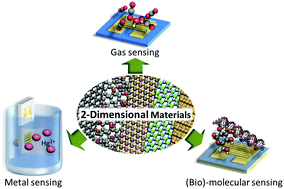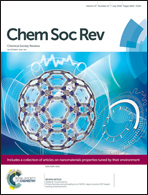Chemical sensing with 2D materials
Abstract
During the last decade, two-dimensional materials (2DMs) have attracted great attention due to their unique chemical and physical properties, which make them appealing platforms for diverse applications in opto-electronic devices, energy generation and storage, and sensing. Among their various extraordinary properties, 2DMs possess high surface area-to-volume ratios and ultra-high surface sensitivity to the environment, which are key characteristics for applications in chemical sensing. Furthermore, 2DMs’ superior electrical and optical properties, combined with their excellent mechanical characteristics such as robustness and flexibility, make these materials ideal components for the fabrication of a new generation of high-performance chemical sensors. Depending on the specific device, 2DMs can be tailored to interact with various chemical species at the non-covalent level, making them powerful platforms for fabricating devices exhibiting a high sensitivity towards detection of various analytes including gases, ions and small biomolecules. Here, we will review the most enlightening recent advances in the field of chemical sensors based on atomically-thin 2DMs and we will discuss the opportunities and the challenges towards the realization of novel hybrid materials and sensing devices.

- This article is part of the themed collection: Nanomaterial properties tuned by their environment


 Please wait while we load your content...
Please wait while we load your content...